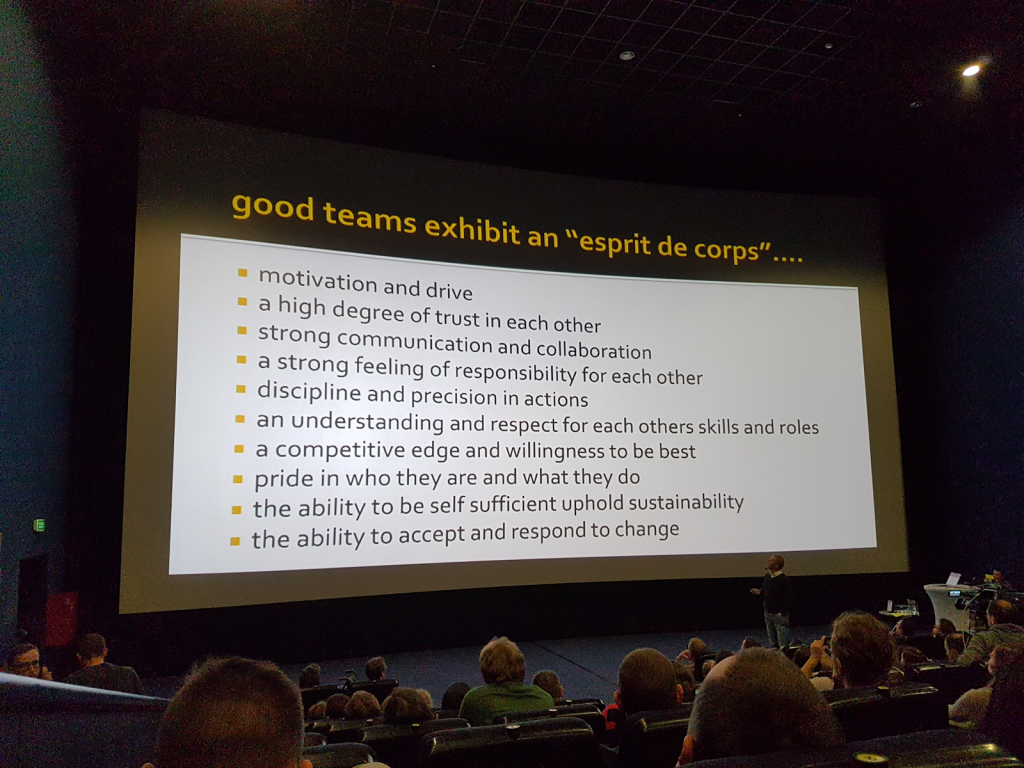Amazing teams, and how to build them
Posted by InterVenture on August 2, 2018One would expect that with Henrik Kniberg, Jurgen Apello, Brian Marcin, and other big names around, it’s quite impossible for someone to stand out as a star speaker at this year Agile By Example, held in Warsaw few weeks ago. However, there were few surprises such as Petter Abrahamsen.
He is a former military officer with nearly three decades of experience in building teams for very specific needs, that must be able to operate as one in quite unusual environments. He definitely added some spice to this year ABE.
What is agility?
Bringing up the picture similar to the one below, he asked: “Is this agility?”
“Is this agility?”
“If the beam was moving, then maybe yes. Otherwise, no.”
And then, he brought up another picture and said:
“Agility is much more like this”.
“Agility is much more like this”
This is an an excellent parallel that shows something each and every of us has faced in every-day work:
While certain situations can be handled with our eyes closed (call it a result of a discipline, repetition, training, or simply accumulated experience), true agility is our ability to respond to the change happening around us(in our every-day workplace battlefields), by using our skills, techniques, and occasional strikes of inspiration to thrive. Or in some cases… to survive and get back on top of the game again!
We all face extreme situations, changing priorities, urgent issues, plans and deadlines we agreed to follow, but all this is a big game, where even rules occasionally change, BUT the team, team skills, and good cooperation, can lead to triumph.
If you never before thought of comparing your team to the Navy SEALs , remember their moto: “Improvise, adapt, overcome” and reconsider the idea. In a nutshell, we all play the game of survival, while trying to achieve our missions (some in “a bit” more extreme circumstances than the others ;), but you get the point).
Good teams
For those of you who find this interesting, I’ll list few things he shared during his talk, and let you dig in and explore on your own. I am sure you’ll find some very intriguing material!
- OODA loop (observe, orient, decide, and act)
- ROE (rules of engagement)
- JOHARI window
- FIRO model
- Team performance prediction — Frode Mjelde
- “Thinking, fast and slow” — Kahnemann
- “Best foot theory” — Nils Arne Eggen
Let me end this post with Jeff Bezos quote that “no team should be larger than 2 pizzas can feed”. Big enough to hold enough complementary skills, and small enough to keep communication effective. I’ll add that sharing those two pizzas from time to time, can bring us closer and make us enjoy the game more!
Good luck with building your teams! And keep in mind that we are all responsible, no matter what our role may be!
Cheers!
P.S. Petter Abrahamsen’s talk, as well as other talks from ABE16, are now available at https://www.youtube.com/watch?v=ocGh8APFvrA&index=6&list=PLwoIK953bBnPa3zBvQase41AOsRzGoVDU.


